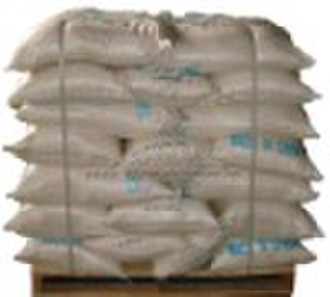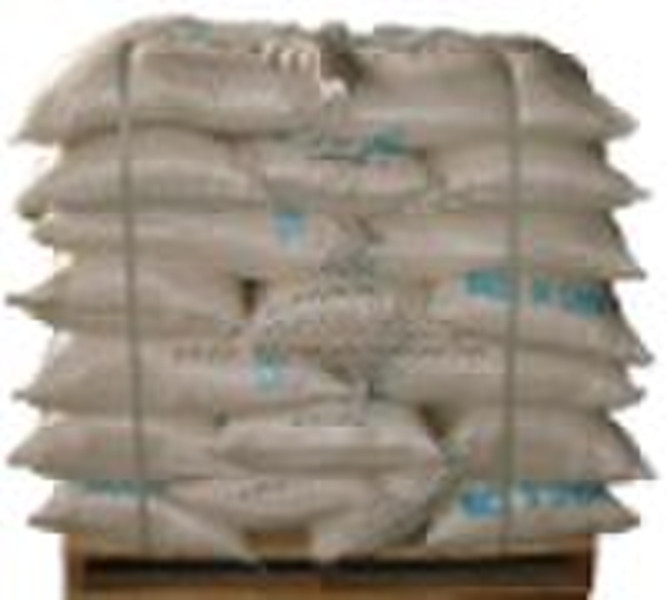盐酸甲酯98.5%Min
原价: 330,00 USD
中国
生产能力:
80000 吨 / 年

Lifeng Zhou
联系人姓名
基本信息
| 化学文摘社编号. | 141-53-7 |
|---|---|
| 出生地 | Hubei China (Mainland) |
| 纯洁的 | 98.5%Min |
| 牌子的名字 | hengri |
| 模式的数量 | 25kg/40kg/50kg/1000kg |
Product Name: Sodium Formate Synonyms: Formic acid, sodium salt CAS No.: 141-53-7 Molecular Weight: 68.01 Chemical Formula: HCOONa 1. Hazards IdentificationEmergency Overview -------------------------- WARNING! HARMFUL IF SWALLOWED OR INHALED. CAUSES IRRITATION TO SKIN, EYES AND RESPIRATORY TRACT.SAF-T-DATA(tm) Ratings (Provided here for your convenience) --------------------------------------------------------------------------------------- Health Rating: 1 - Slight Flammability Rating: 0 - None Reactivity Rating: 1 - Slight Contact Rating: 2 - Moderate Lab Protective Equip: GOGGLES; LAB COAT; PROPER GLOVES Storage Color Code: Green (General Storage) --------------------------------------------------------------------------------------- Potential Health Effects ----------------------------------Inhalation: Inhalation of dust can irritate the respiratory tract with symptoms of sore throat, coughing, and shortness of breath. Ingestion: Causes irritation to the gastrointestinal tract. Symptoms may include nausea, vomiting and diarrhea. Skin Contact: Causes irritation to skin. Symptoms include redness, itching, and pain. Eye Contact: Causes irritation, redness, and pain. Chronic Exposure: No information found. Aggravation of Pre-existing Conditions: No information found.2. First Aid MeasuresInhalation: Remove to fresh air. If not breathing, give artificial respiration. If breathing is difficult, give oxygen. Get medical attention. Ingestion: Induce vomiting immediately as directed by medical personnel. Never give anything by mouth to an unconscious person. Get medical attention. Skin Contact: Immediately flush skin with plenty of water for at least 15 minutes. Remove contaminated clothing and shoes. Get medical attention. Wash clothing before reuse. Thoroughly clean shoes before reuse. Eye Contact: Immediately flush eyes with plenty of water for at least 15 minutes, lifting lower and upper eyelids occasionally. Get medical attention immediately.3. Fire Fighting MeasuresFire: Not considered to be a fire hazard. Explosion: Not considered to be an explosion hazard. Fire Extinguishing Media: Use any means suitable for extinguishing surrounding fire. Special Information: In the event of a fire, wear full protective clothing and NIOSH-approved self-contained breathing apparatus with full facepiece operated in the pressure demand or other positive pressure mode.4. Accidental Release MeasuresVentilate area of leak or spill. Wear appropriate personal protective equipment as specified in Section 8. Spills: Sweep up and containerize for reclamation or disposal. Vacuuming or wet sweeping may be used to avoid dust dispersal. 5. Handling and StorageKeep in a tightly closed container, stored in a cool, dry, ventilated area. Protect against physical damage. Containers of this material may be hazardous when empty since they retain product residues (dust, solids); observe all warnings and precautions listed for the product.8. Exposure Controls/Personal ProtectionAirborne Exposure Limits: None established. Ventilation System: A system of local and/or general exhaust is recommended to keep employee exposures as low as possible. Local exhaust ventilation is generally preferred because it can control the emissions of the contaminant at its source, preventing dispersion of it into the general work area. Please refer to the ACGIH document, Industrial Ventilation, A Manual of Recommended Practices, most recent edition, for details. Personal Respirators (NIOSH Approved): For conditions of use where exposure to dust or mist is apparent and engineering controls are not feasible, a particulate respirator (NIOSH type N95 or better filters) may be worn. If oil particles (e.g. lubricants, cutting fluids, glycerine, etc.) are present, use a NIOSH type R or P filter. For emergencies or instances where the exposure levels are not known, use a full-face positive-pressure, air-supplied respirator. WARNING: Air-purifying respirators do not protect workers in oxygen-deficient atmospheres. Skin Protection: Wear protective gloves and clean body-covering clothing. Eye Protection: Maintain eye wash fountain and quick-drench facilities in work area. Use chemical safety goggles and/or full face shield where dusting or splashing of solutions is possible.
交货条款及包装
端口: wuhan
付款条款
Documents Against Acceptance
Documents Against Payment
Letter of credit
Telegraphic transfer
MoneyGram
-
支付方式
我们接受:









